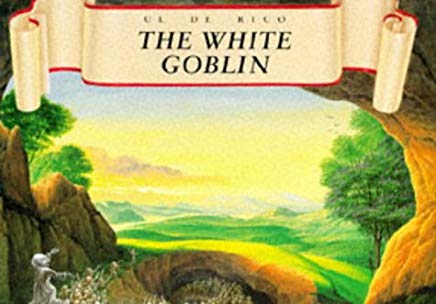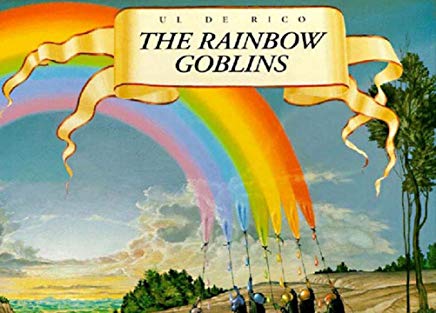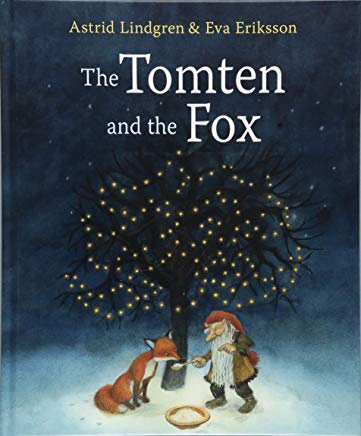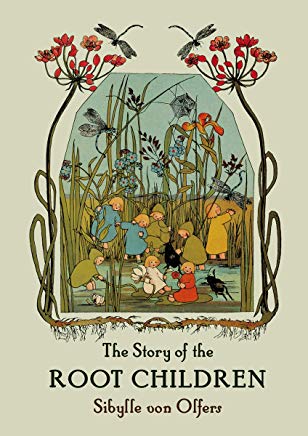The Blog
Blog Entry
Goblins in America

Weird weather we’re having, right? Winter and summer both jostling over our best laid plans. Regardless if this is a consequence of global climate abuse, or annual amnesia, or cultural hyperbole, this time of year I always find myself worrying a little about the Root Children.
Though you would be forgiven for not sharing my concern. There are probably any number of picture books documenting the intricate labors of these mythic halflings, and probably all of them are published in Europe. Mine was originally published in German in 1906 as Etwas von den Wurzelkindern, then translated and reproduced in Scotland of all places, and printed in Belgium, then found at the bottom of a mineshaft in Amish Pennsylvania, surrounded by teensy pickaxes and cans of Old Milwaukee, but enough: For the uninitiated then, the Root Children are called to duty every springtime by a crotchety mistress bearing scissors, needles and colorful swatches of cloth. And keys hanging from her belt. I give you Mother Earth:
“Wake up! As soon as you’re ready, I’ll unlock and open the doors to the ground.”
So sharp objects, scary old crones, buried alive – here’s the thrill, if nothing else, of something so plainly beyond the permissions of censors and child welfare authorities. Relax! It’s allegory! And anyway they get to sleep the whole winter, the work is more crafts project than sweatshop – plus isn’t it kind of a blast to behold the sky-blue, buttercup-yellow, poppy-red majesties of spring, and to be able to thank anyone besides dear old boring God?
I am open to suggestions on this one, still it seems we are these days less likely to run into freakish pagan figments in the American picture book landscape than lovable groundhogs escaping their shadows. We do talking animals here, and once in a while heartsick vampires, but the notion of humanoid creatures scuttling around where we cannot see them is conceivably a hazard to our national sleep. Bigfoot? Come on. Considering the variety and spaciousness of our topography, it’s a wonder we are not everywhere imagining elves and otherwise gnomish little things that go bump in the night.
Do we need them? It’s tempting to suppose that many of these mythologies are the product of surrender to those famously bottomless Northern European nights: Eat sausage, sleep, wake up, eat pickled things, drink cider, make up stories about a hairy little guy who’s guarding the henhouse.
Often these tales are more dream-like than moral, and often these prove worth revisiting. The librarian in my son’s elementary school once pointed me to a couple of strange titles which had apparently endured so much revisiting they were both falling apart at their spines. Have you seen these? she wondered. I hadn’t, but the saturated weirdness of their illustrations seemed to promise that hardly anyone outside of this library’s dreary, utilitarian walls had either.
The Rainbow Goblins – the first of these books I was pointed to – concerns the sinister intentions of a band of seven different color baldies who wander the valleys and lakesides and mountains hunting for rainbows to suck out their colors. “Yellow, being the craftiest, was their chief.” Who knew? With lassoes and pails and indelicate appetites they venture together toward the last unspoiled country – the Valley of the Rainbow – through meticulously rendered oak panel paintings of cliff-scapes and lightning storms – and boundless fields of flowers which finally provide their undoing.
This is all melodrama, and it floats on only the thinnest of narrative wisps, still these illustrations prove sufficiently diverting in a story where diversion is so clearly the point. Imagine these Rainbow Goblins on a cheerless Scandinavian night. This legend was written (and more importantly painted) in 1976 by the amazingly named Ul de Rico, otherwise known as Count Ulderico Gropplero di Troppenburg – yeah, I don’t want to know. He waited twenty years to compose its sequel – The White Goblin – about the eighth of that pernicious tribe, who was famously cast out when we weren’t looking:
“In reality, I, who was banned and laughed at, am the ruler! As the white one, I gather all the colors in myself, I am the sum of my brothers!”
There are a lot of Countish pronouncements like that, and words like “ignominious,” and Cave Goblins this time to do his wicked bidding. It doesn’t always make sense. But here are also earthquakes and cataclysms and stricken, polluted cities. And here are mighty waves of flowers, trees, plants, animals, birds, insects, and here is such moxie at wanting to have another go at this tumult, then finally such pathos when the White Goblin retreats:
“He sometimes had wild nightmares… but the stillness of the ice world soon made his memory of the lust for color pale. In the white infinity he found himself again. If one can trust reports, the last years of his life were serene and contented.”
That none of this appears to happen during human history, or indeed any history that we need to learn about, is conceivably much of its appeal to those seven-, eight- and nine-year-olds cooped up for many hours in their cookie cutter slabs. Escapism? Sure. Still, someday someone’s going to need to get around to inventing a better, wiser goblin for our times.




